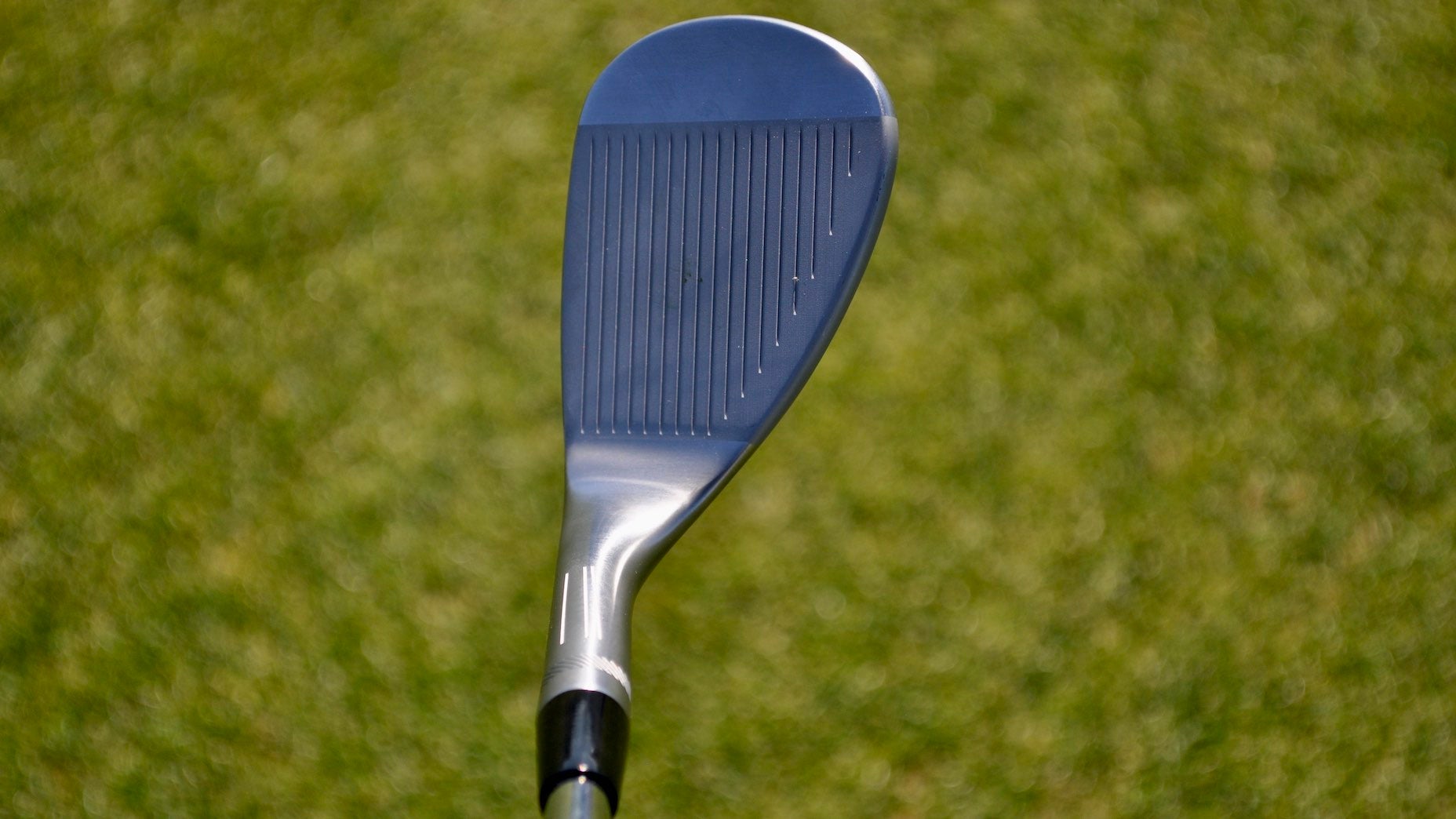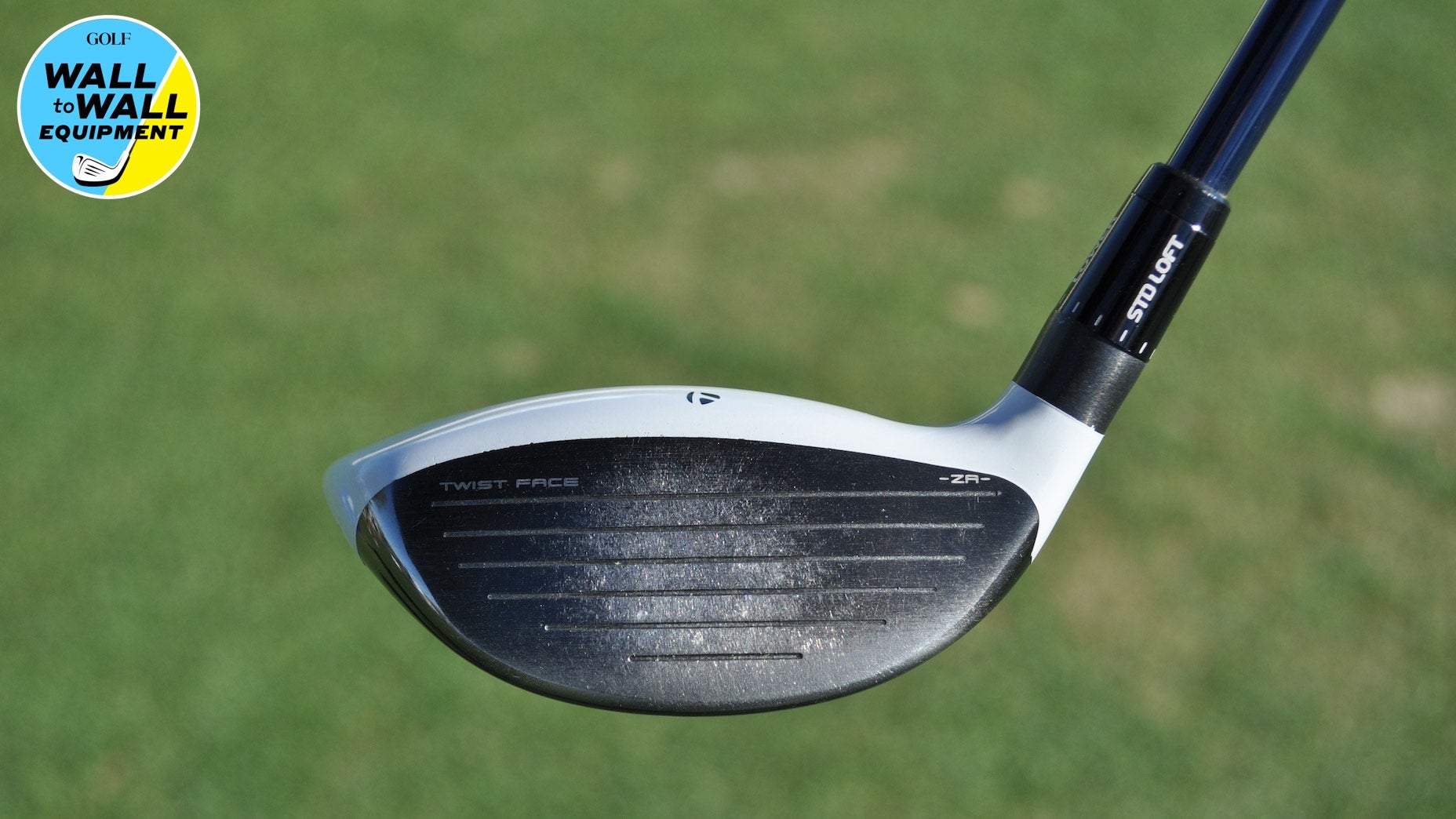
The three lines on the hosel are designed to help golfers get in the optimal setup position for a flop, bunker, pitch and chip shot.
Jonathan Wall/GOLF
After 15 years of playing professional golf full time, Parker McLachlin was spent. The results weren’t up to his standard, and he’d started to lose some of the feel of what he was doing with his golf swing.
It was time for the former PGA Tour winner to find his next calling.
While contemplating what was next, a caddie friend suggested McLachlin create an Instagram account and share some of his short game secrets with the world. With a little bit of help, the “shortgamechef” was born on Instagram.
“I was always a solid short-game player,” McLachlin told GOLF.com. “I figured I’d serve up some recipes for shots around the green on social media and see what happened.”
Two days after the account was created, Tour winner Kevin Streelman contacted McLachlin to see if the two could meet for a lesson. The lesson turned into full-time short game instruction, which eventually saw Streelman move from 93rd in the Official World Golf Ranking to 45th during their time working together. Reigning Women’s British Open champion Anna Nordqvist reached out shortly thereafter for instruction, further validating McLachlin’s path into the instruction space.
As he began to expand his list of students to include amateurs, McLachlin started to pick up on some significant differences between the pro and average joe when it came to wedge setup position, particularly where the hands and shaft were situated.

A closer look at the three milled lines on the hosel of the wedge.
Jonathan Wall/GOLF
“For the disciplines of short game — bunker, flop shot, pitching and chipping — pros and amateurs were on completely different planets in terms of setup,” McLachlin said. “It got me thinking, if I could figure out a way to help amateurs set their hands properly, I might have something.”
The biggest issue McLachlin saw was too much forward shaft lean for the average amateur, which led to inconsistent contact on a myriad of shots. On a trip home from Las Vegas with the UCLA men’s golf team — McLachlin was hired as a volunteer assistant coach in 2019 — he started to wonder if there was a way he could give amateurs visual cues to help them set up like a Tour player.
“I started thinking about the SeeMore putter with the flange on the back,” McLachlin said. “They had figured out a way to get the shaft lean out for putting. I wanted to do the same thing for my amateurs, but I knew I couldn’t add a flange to the wedge.”
When McLachlin returned home, he had his wife sit on the ground as he got into the wedge setup position for a pitch, chip, bunker/flop shot. From there, he asked his wife to mark a line straight up to his nose on the hosel of the wedge for each of the three positions.
In the address position, the far left line (0 degrees forward lean) is supposed to run “straight up to the nose” to help get the clubface, hands and shaft in a position to execute a bunker or flop shot. When the middle line (1.5 degrees) runs up to the nose, it promotes a more neutral hand and shaft position for a pitch shot setup. The far right line (4.5 degrees) gets the shaft forward slightly for a bump-and-run.

A look at the wedge from the setup position.
Jonathan Wall/GOLF
Once the lines were in place, McLachlin then took the wedge to True Spec Golf and had them milled in place, to make the prototype look more official. After showing the wedge around, McLachlin discussed the concept with Bob Vokey. Vokey initially thought it was a training aid, but as learned more about the lines, he began to realize the hand positions (and shaft lean) McLachlin was suggesting for each shot were in lockstep with what he’d been preaching for years.
Following a lengthy back and forth over the next 18 months, McLachlin and Vokey came to an agreement that will see the former Tour pro’s three setup lines added to WedgeWorks’ custom offerings for SM9.
“It’s been a while ride,” McLachlin said. “I feel like I’ve been keeping my mouth shut on this thing for 18 months. I think this is a game-changing type of a thing that will help people all over the world.”
While McLachlin’s wedge setup was the impetus for the three lines on the hosel, Vokey Tour rep Aaron Dill also took photos of the hand position at address for flop, pitch, bunker and bump-and-run shots for 30 of the best players, including Jordan Spieth and Rickie Fowler. A high-tech software then aggregated the shaft lean and clubface position to determine the three setup locations on the Vokey SM9 wedge.
McLachlin is quick to point out the lines are designed for recreational golfers, but that doesn’t mean pros can’t benefit from the visual cues as well. Kyle Stanley put a 60-degree Vokey SM9 D Grind in play at the WM Phoenix Open after getting a taste of the wedge early in the week. Brooks Koepka, a friend of McLachlin’s, gave his seal of approval on the design as well.
“I remember Brooks saying, ‘Park, this has got to be illegal,” he said. “Once he hit a few more, he turned around and said it was ‘basically a cheat code.’”
McLachlin is hoping the visual aids make it easier for golfers to get in the correct position at setup in an effort to eliminate many of the bad habits that start before the club is even in motion.
“I think that anybody can pitch it, bump-and-run it and execute a bunker shot like a tour player — and I think I can get amateurs to do that,” McLachlin said. “But it ultimately starts with the setup.”
The visual aid will be available Feb. 17 as an add-on for golfers who create a wedge through Vokey’s WedgeWorks program.
Want to overhaul your bag for 2022? Find a fitting location near you at GOLF’s affiliate company True Spec Golf. For more on the latest gear news and information, check out our latest Fully Equipped podcast below.










